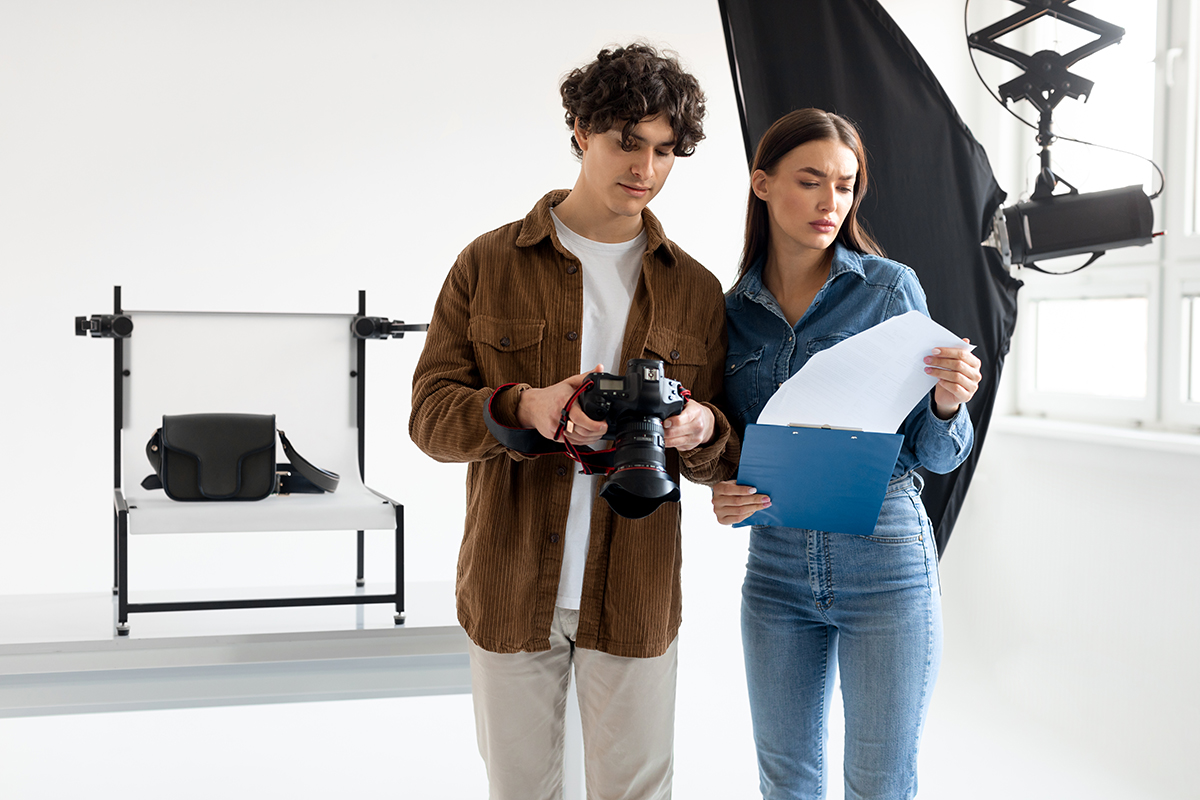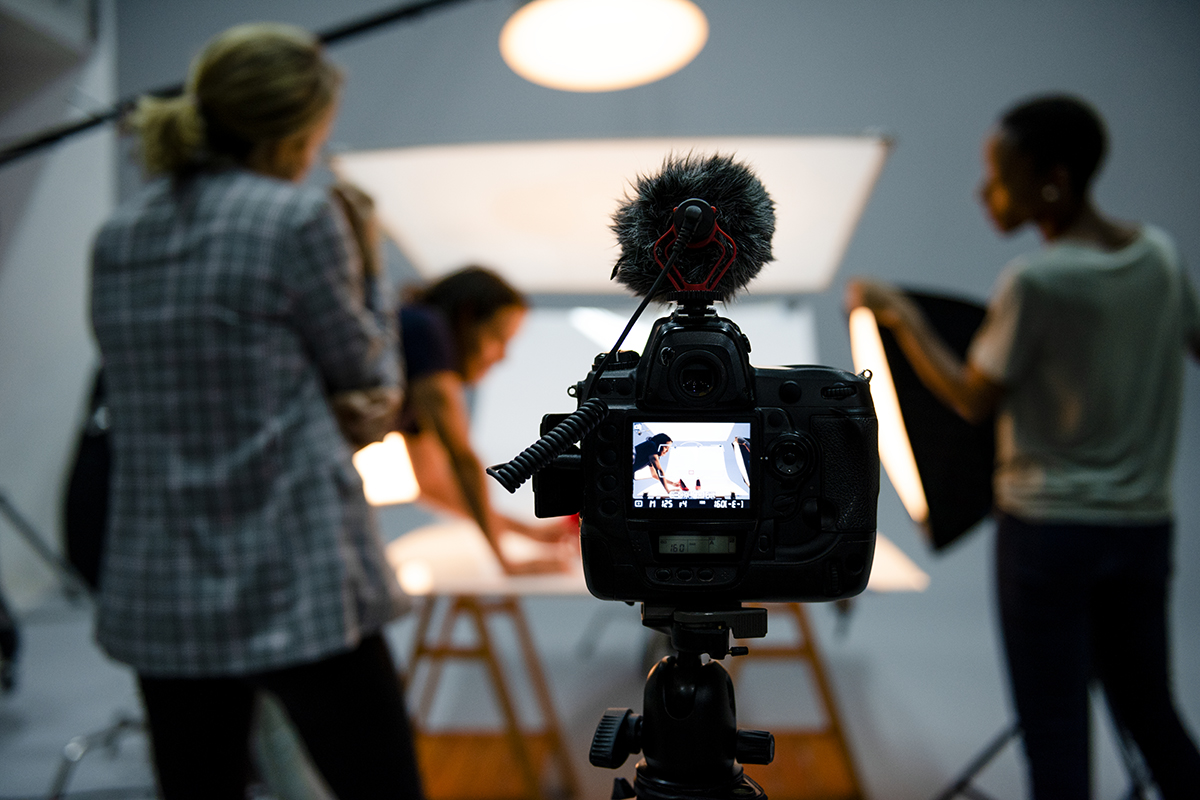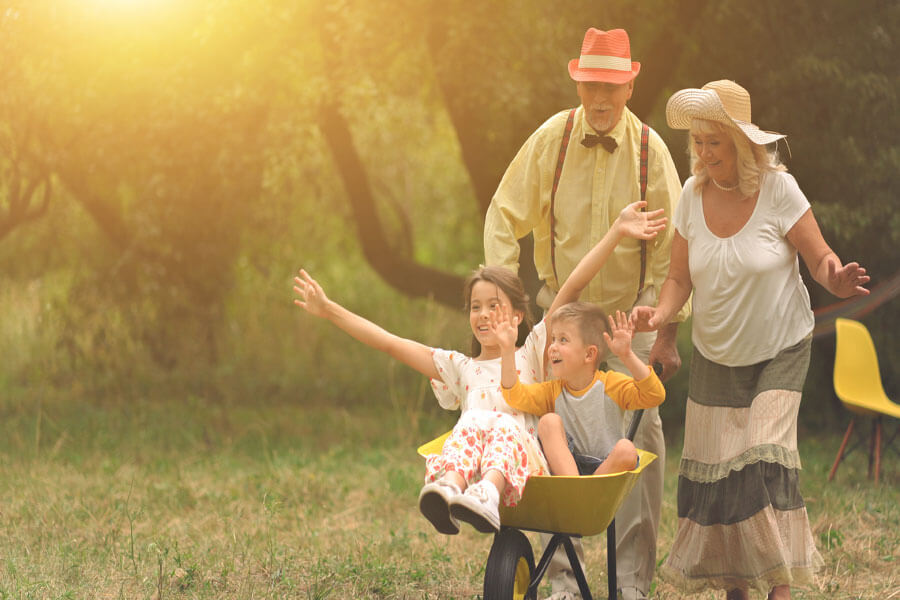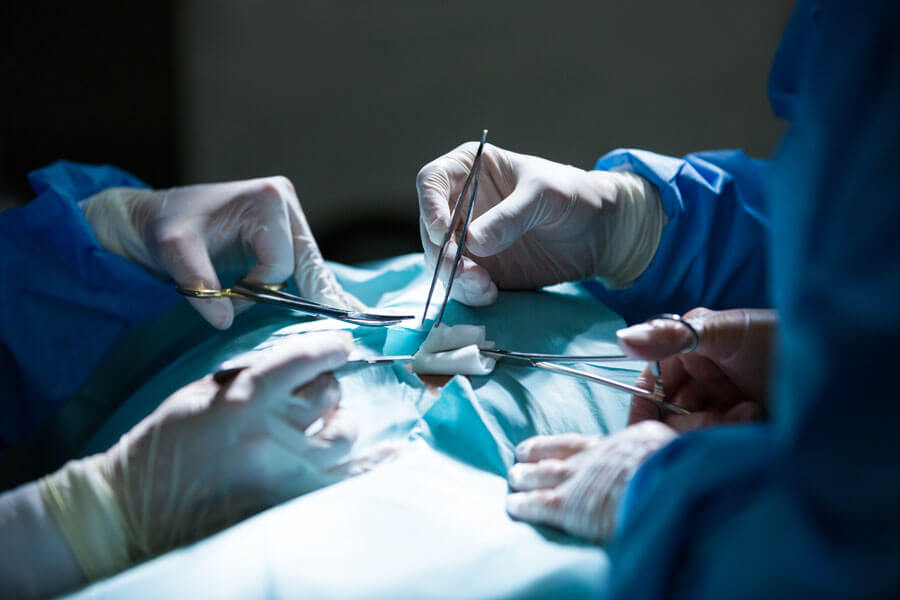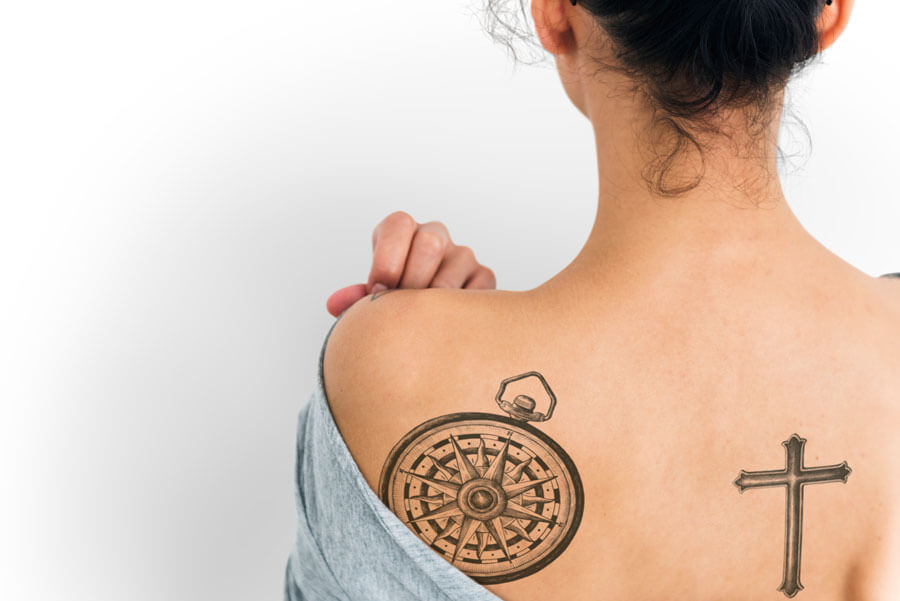Being a photographer comes with a set of responsibilities and legal liabilities. Interacting and working with different models or subjects requires caution and professionalism. When you have to do a photoshoot, use a photoshoot consent form to remain professionally and legally secure. We have also provided free templates of this form in this article for you to access and use directly by making modifications. Moreover, you can download and consult them to understand the basics of this form and then make your own.
Free Forms
Provided below are free photoshoot consent forms for your use. We have prepared these templates carefully. They include all the necessary components to keep you legally compliant with the general photography laws. However, we suggest you involve a legal attorney in finalizing your consent form, as photography laws vary state by state.
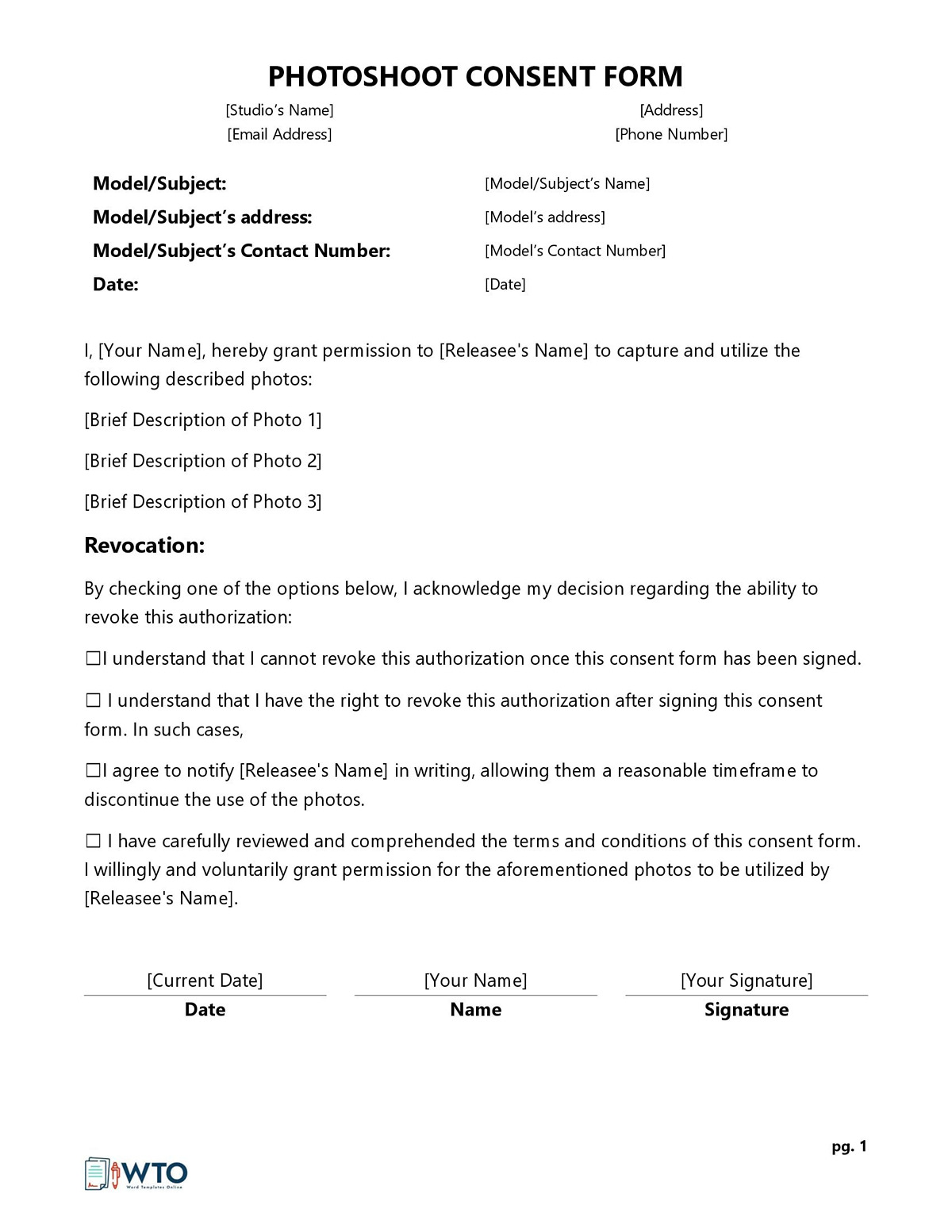
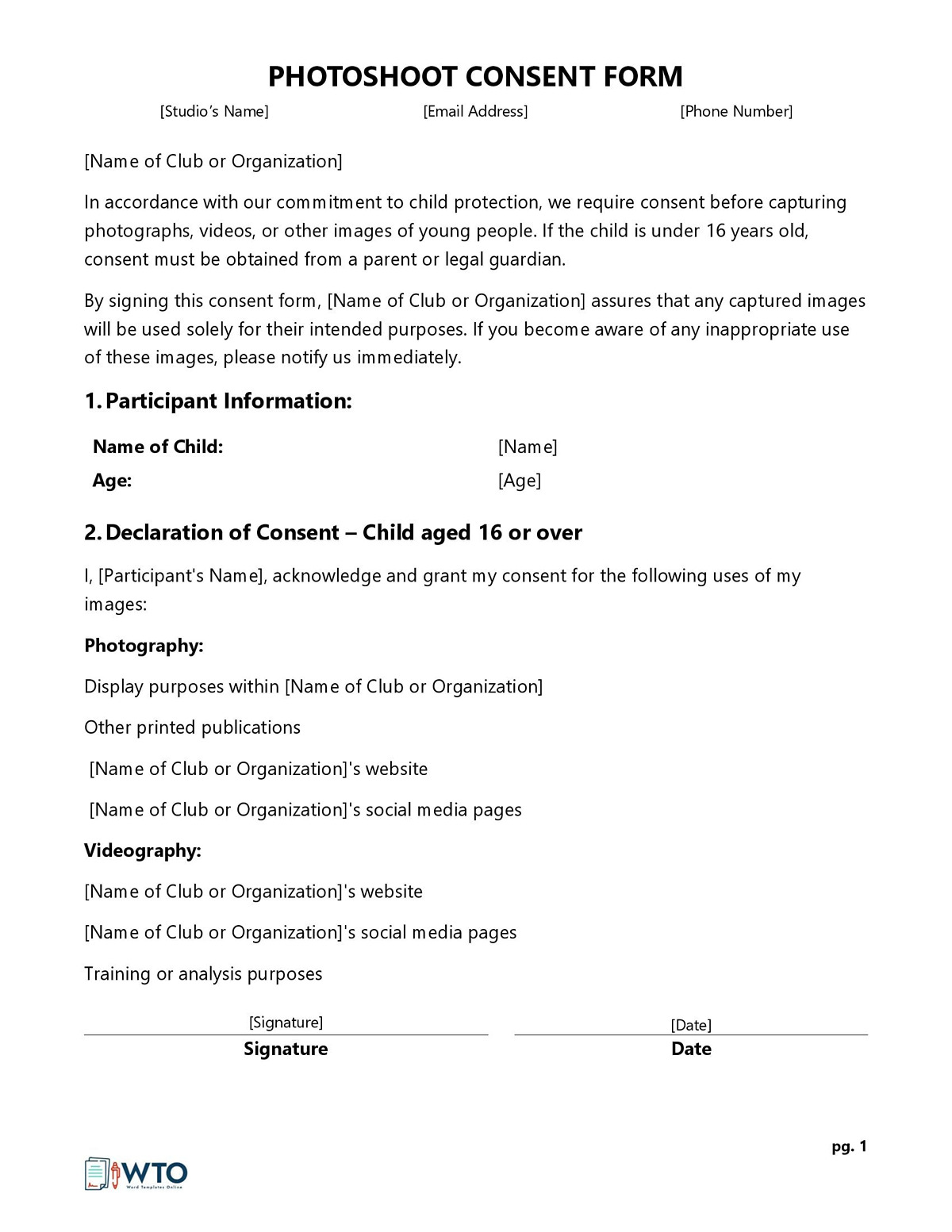
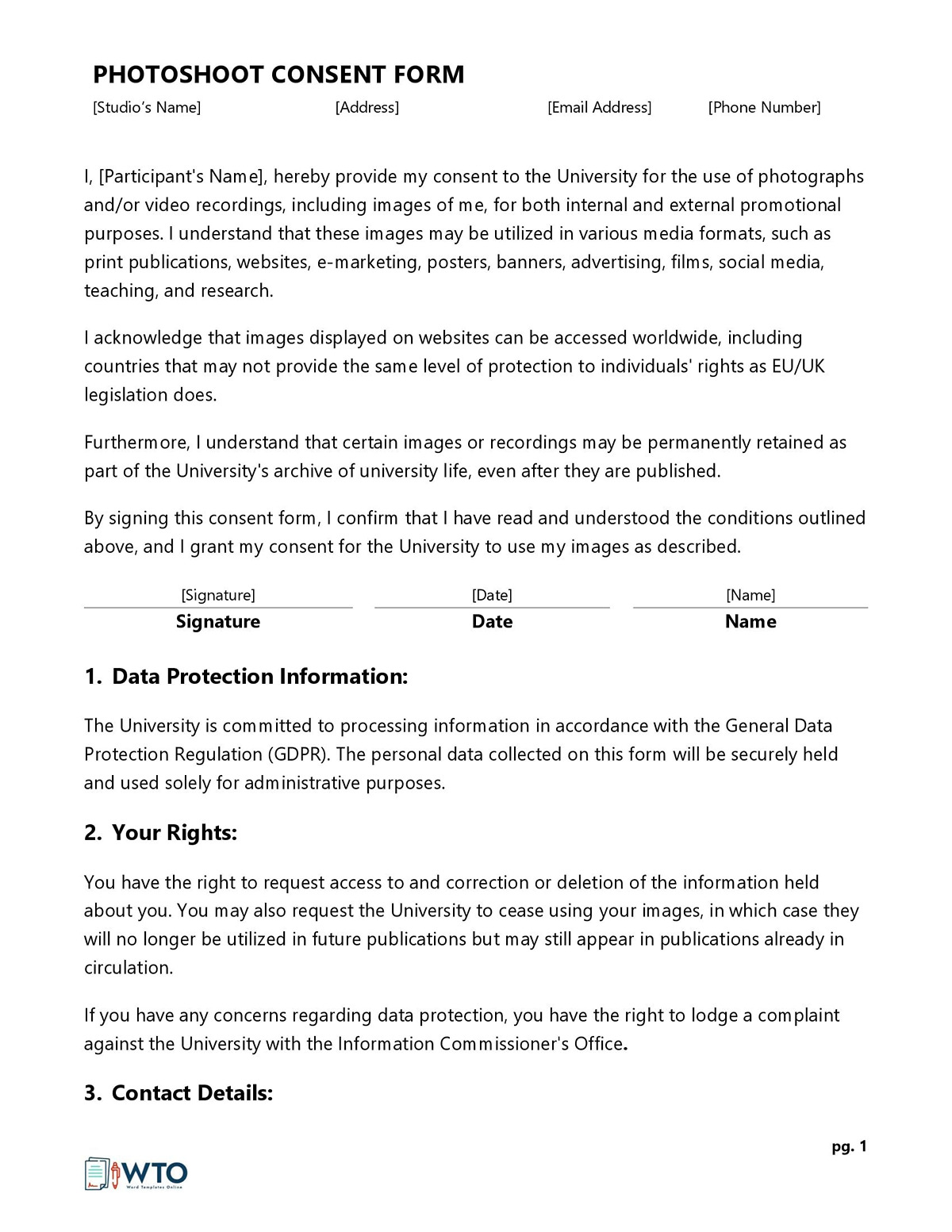
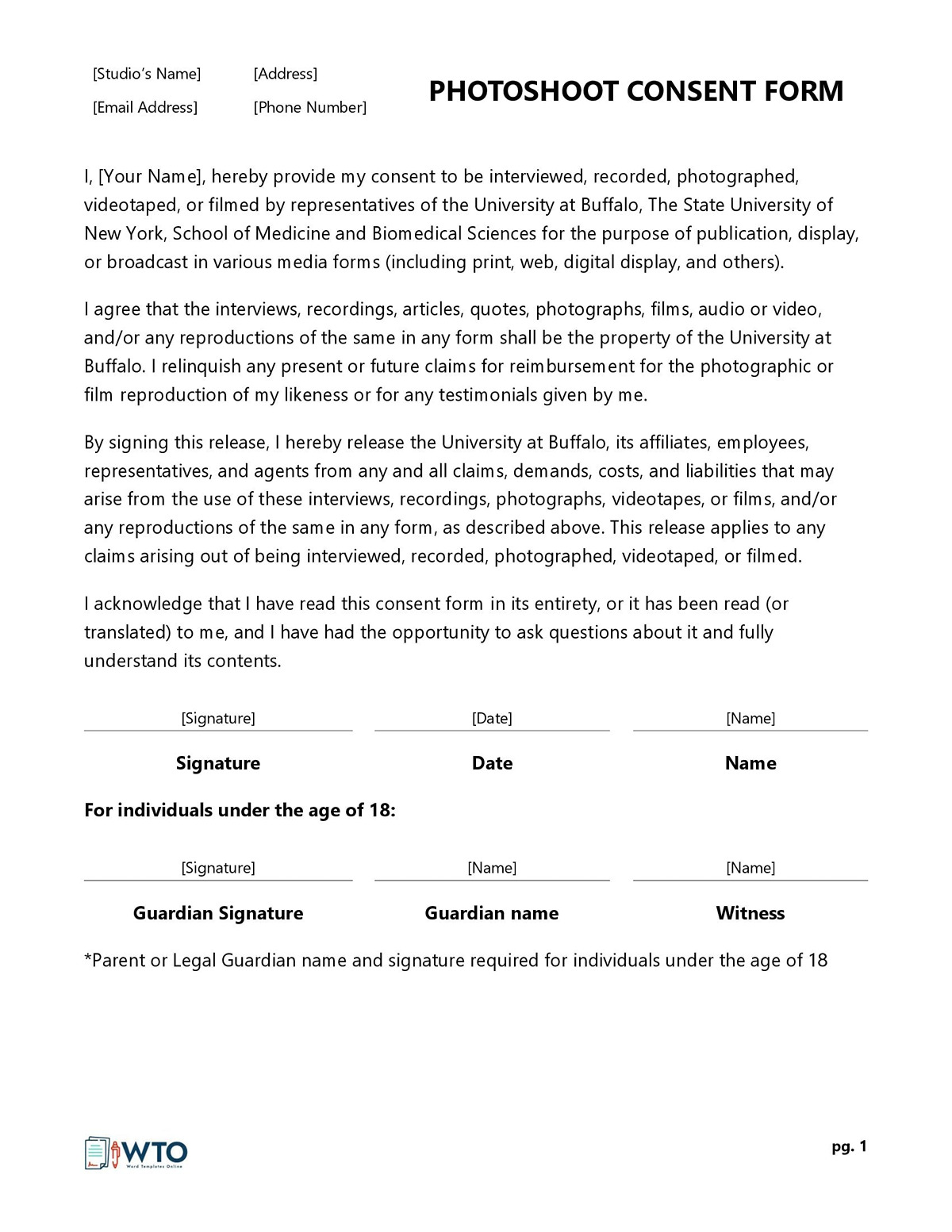
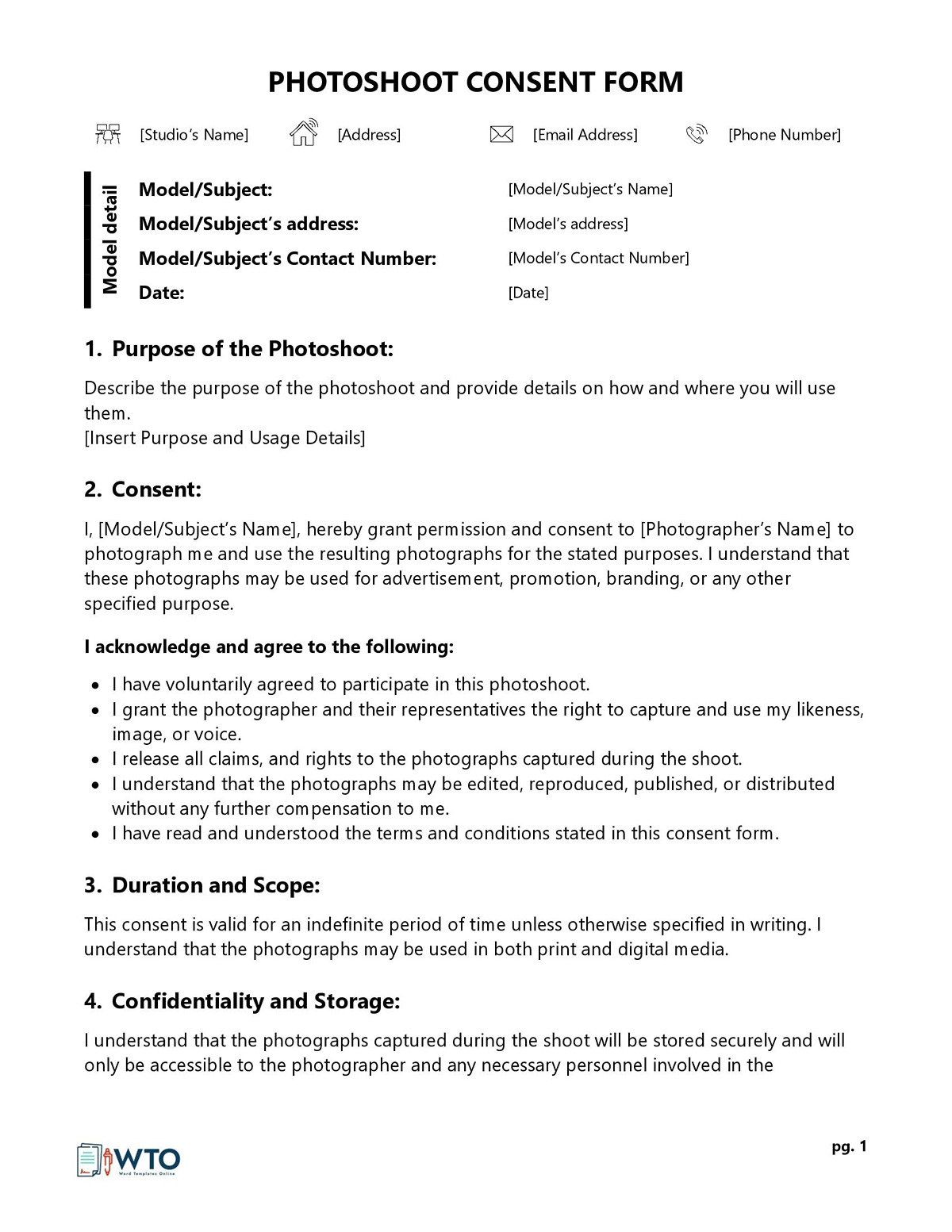
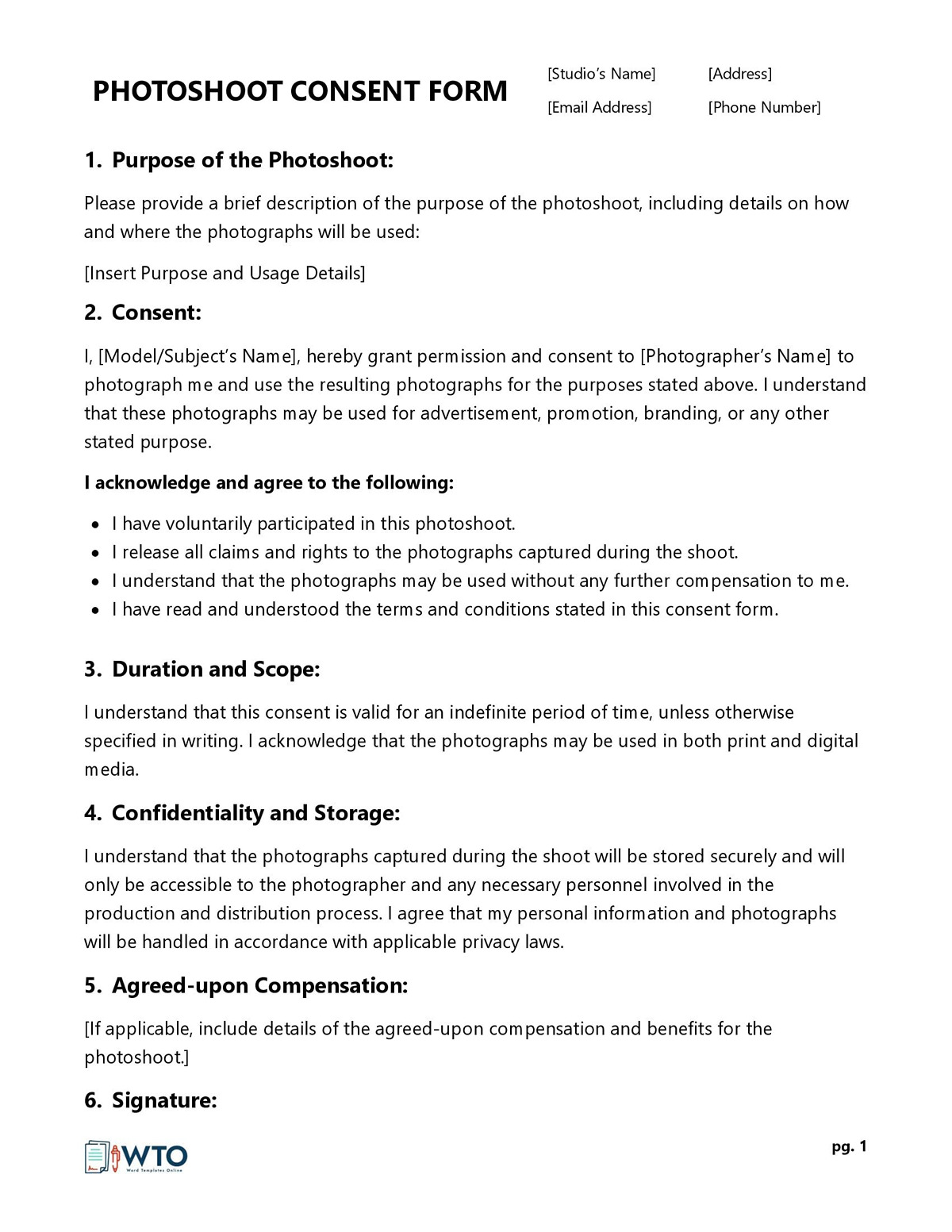
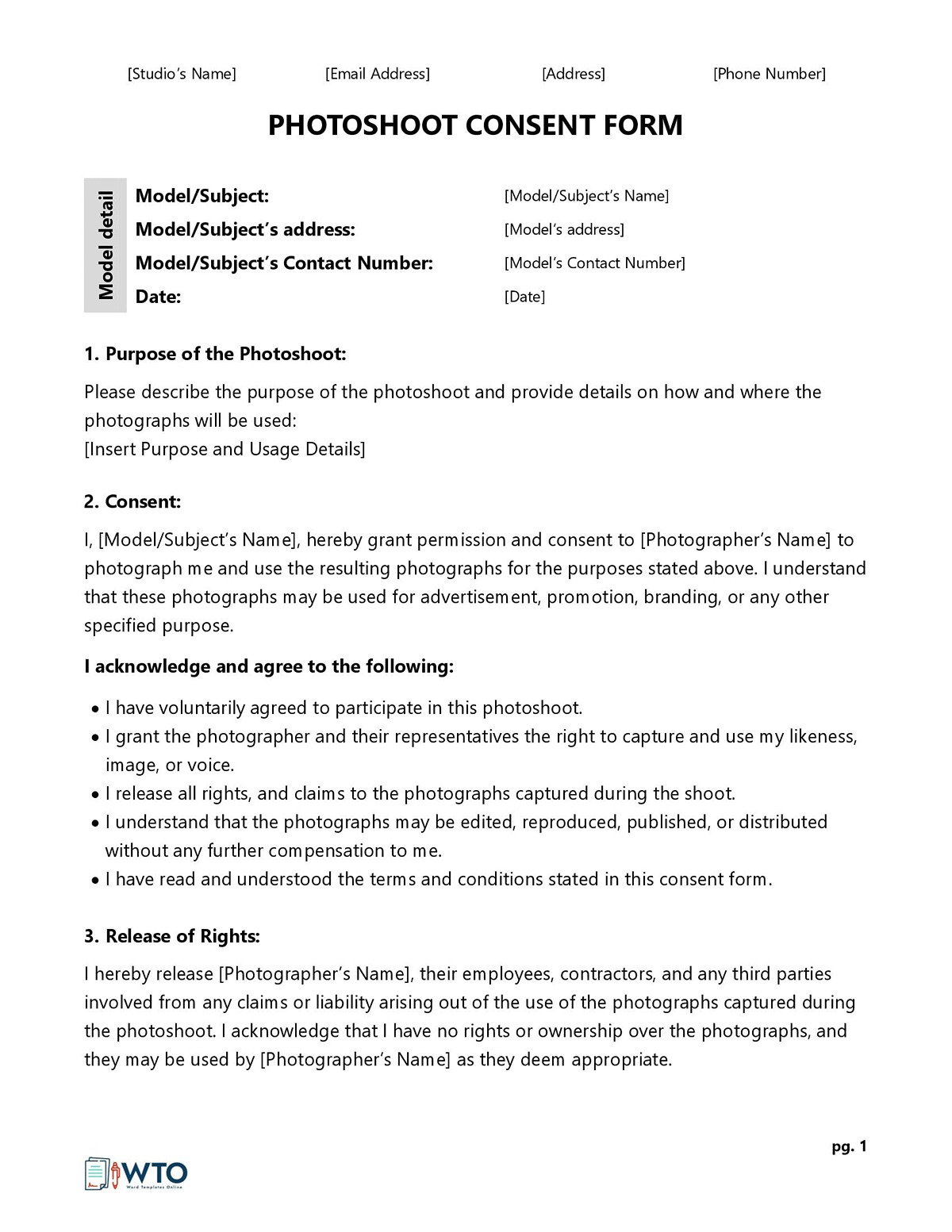
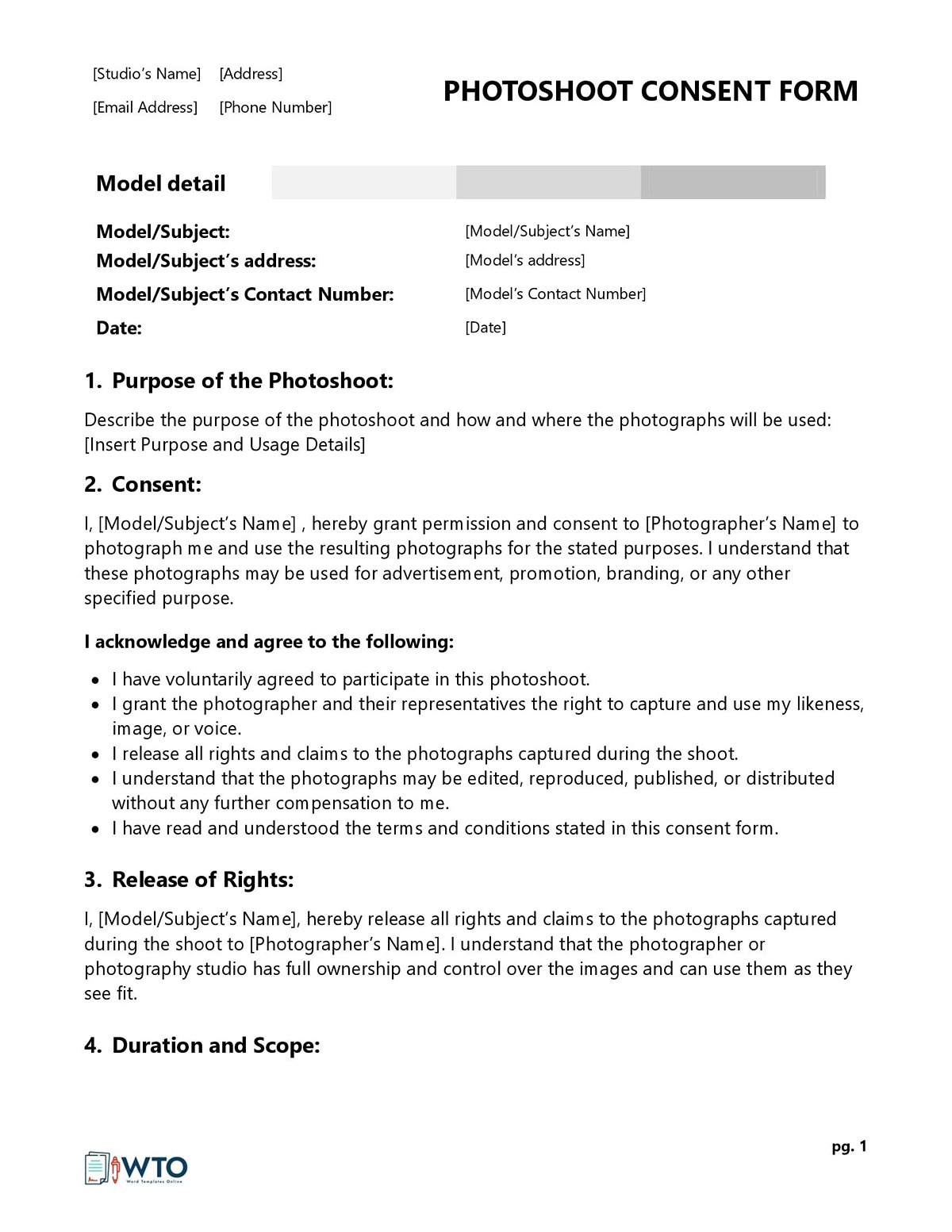
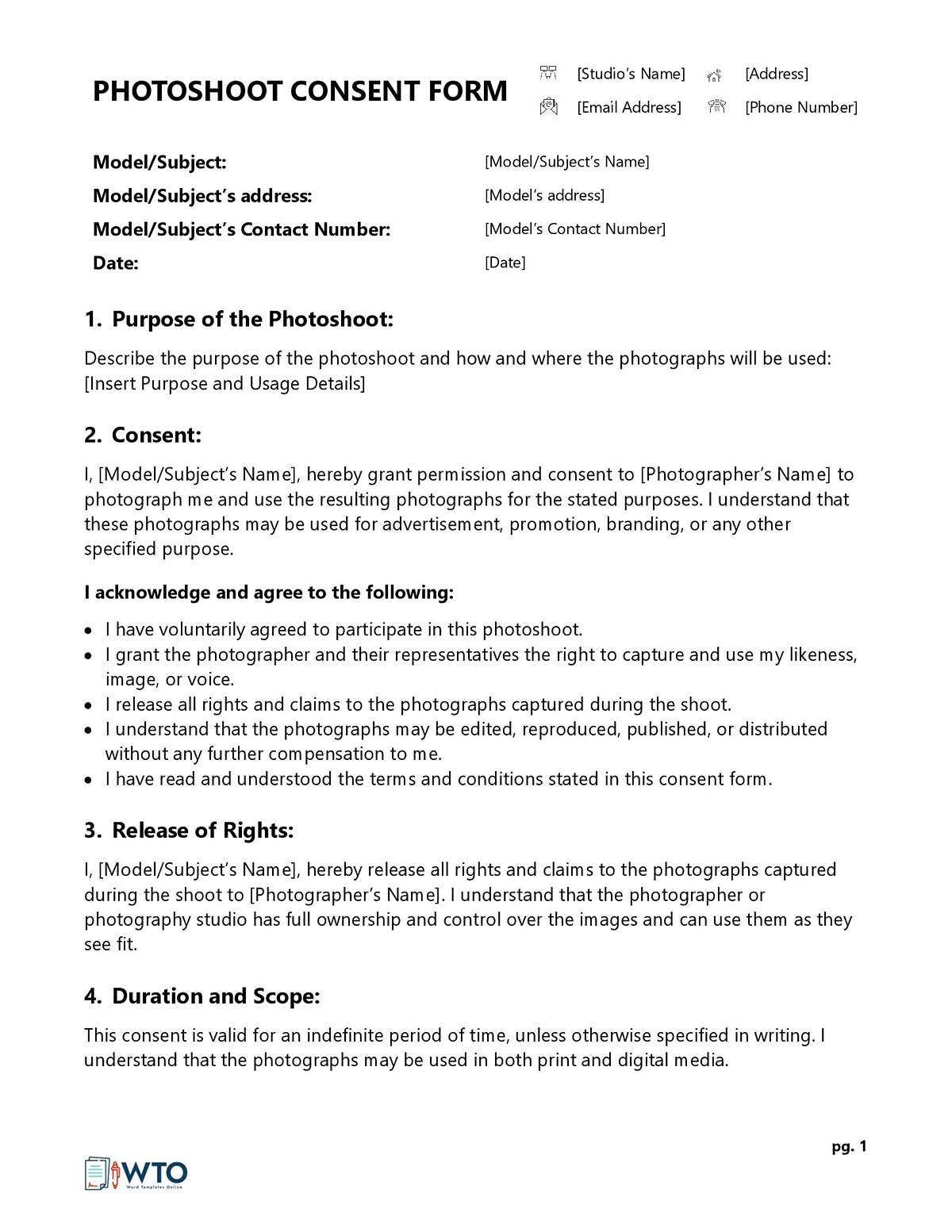
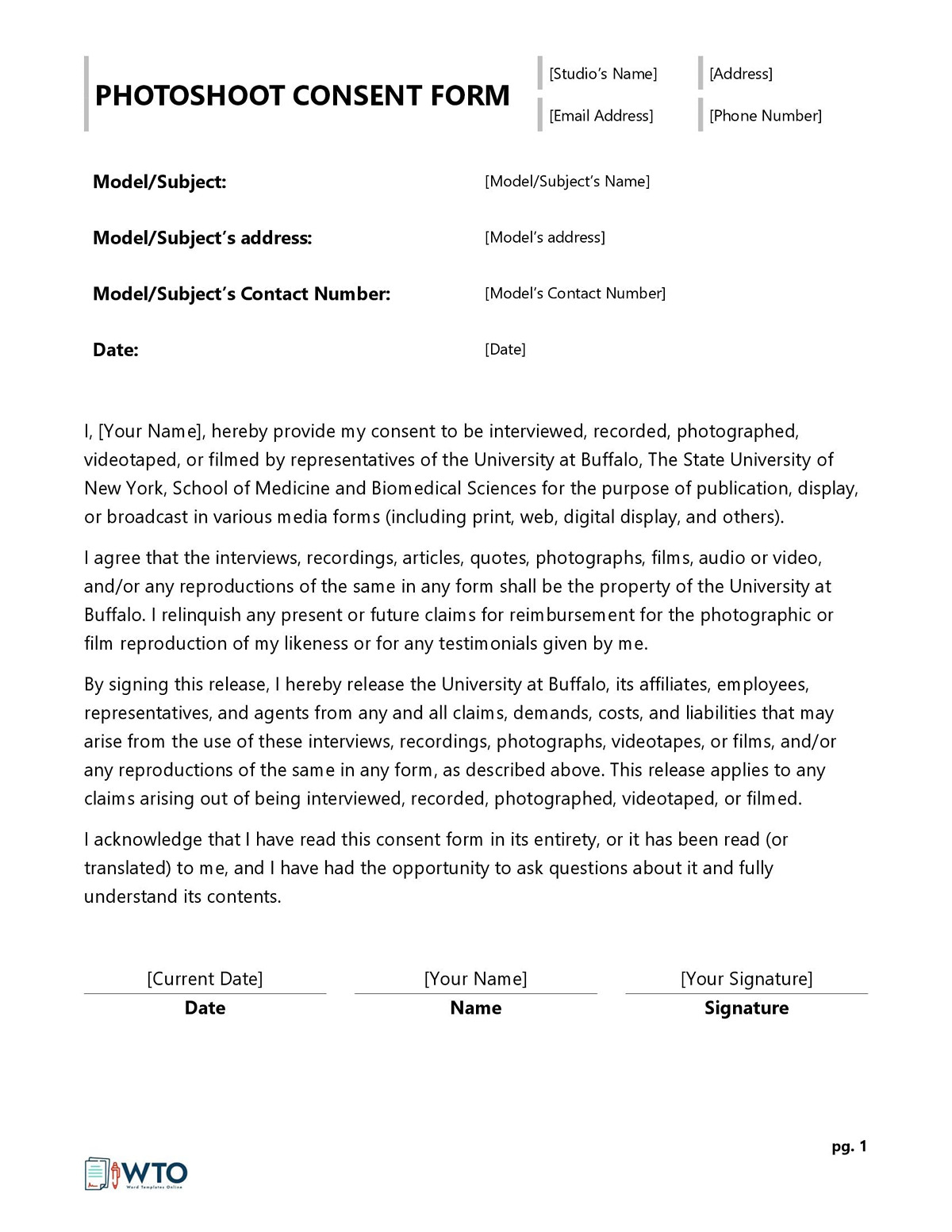
What are Photoshoot Consent Forms?
Photoshoot consent forms are legally binding documents that capture and record the consent the photographer obtains from the subject(s) of a photoshoot to use their images. You obtain this consent prior to the photoshoot to ensure that you remain legally secure in the future. This form not only records the consent of the subject, but also specifies the other basic terms of the photoshoot activity between the parties. However, its main purpose is to legally protect a photographer or photography organization/studio conducting a photoshoot involving other(s).
What Components a Photoshoot Consent Form Contains
A basic photoshoot consent form must contain a few key components to be legally credible. Each of these components has a specific purpose that contributes to the main purpose of the form.
A photoshoot consent form typically contains the following components:
Identification of the parties
A typical photoshoot consent form starts with the identifying information of all the parties involved. These parties typically include the photographer and the individual(s) whose pictures he or she captures. Typically, include the names, addresses, state of residence, phone numbers, and email addresses of both the parties.
Purpose of the photo shoot
The purpose why you are doing the photoshoot should be specified next. Also, provide details of how and where you will use the photographs you capture. For instance, you could mention that they will be used for advertisement, promotion, or branding purposes. Moreover, if there is any other personal intention for their use, mention that clearly here too.
The consent
Next, the form captures the written consent of the model(s), or individual(s) in the photographs. Include a section for their signatures here so that they acknowledge their participation and allow the usage of their images. This section may also include details about the limitations or restrictions for usage.
Release of rights
Include a section based on the model’s release of rights to the images. This section will state that the individual(s) in the photographs relinquish their rights and claims on the images captured. By acknowledging this, they will give the photographer or photography agency to use the photographs how they intend to do so in the form.
Duration and scope
A photoshoot consent form must also contain a section specifying the time period for which the consent you obtain is valid. In case you intend to publish the photographs you capture in print or digital media, this section should clarify the validity of the consent for an indefinite period of time.
Confidentiality and storage
Include a section that states where and how the images you capture will be located. This section is essential for maintaining the subject’s privacy and confidentiality. Also specify who will have access to their photographs.
Agreed-upon compensation
If you and the model/individual agreed upon a specific amount of compensation and/or benefits for the shoot, include its details here. You must specify the dollar amount along with any additional benefits to avoid any problems later on.
Signatures and date
End the photoshoot consent form by including a section for the subject’s signature and the date on which they sign it. It is important to note that if the subject is a minor, his or her legal guardian will sign this section. This will help in terms of record-keeping purposes and serve as proof of consent.
(Note that the components in a photoshoot consent form may vary from jurisdiction to jurisdiction based on photography laws. Therefore, it is essential to consult a legal attorney in the process of ensuring that your completed form is legally credible.)
Tips for Making a Photoshoot Consent Form
A photoshoot consent form is a strictly formal document that legally binds its users to its terms. Therefore, it is essential to make it in a proper way. You can ensure that you prepare your photoshoot consent form optimally by considering a few tips.
These are:
Use simple language
Use simple and clear language in your consent form to ensure easy comprehension and good readability. Avoid complex legal jargon so that the reader(s) can easily understand the terms they are agreeing to.
Provide examples of intended use
To avoid issues in the future, include examples of the intended use of the models’ photographs. Simply stating the type of usage might not be comprehensive enough in some cases. Moreover, it is the models’ right to have complete information about how and where you intend to use their photographs.
Include a revision clause
Include a clause in your photoshoot consent form that allows future amendments to the terms in it. This will help you adapt to evolving industry and/or legal standards.
Include a section based on image approval
Include a section that gives the model(s) the option to view and approve their images before you use them. This will allow them to have a say in the publications in due time, avoiding any disputes later on. It will also convey professionalism and respect by ensuring the models’ comfort.
Conclusion
If you are a photographer or own a photography studio, you must make and use a photoshoot consent form before you conduct photoshoots of any models. This form obtains and captures the consent to use the images of the models as intended. It is a legally binding form that prevents future disputes or inconveniences.

